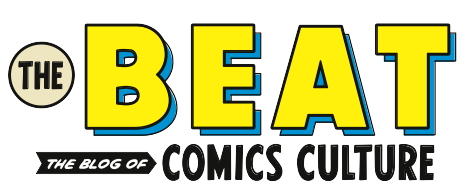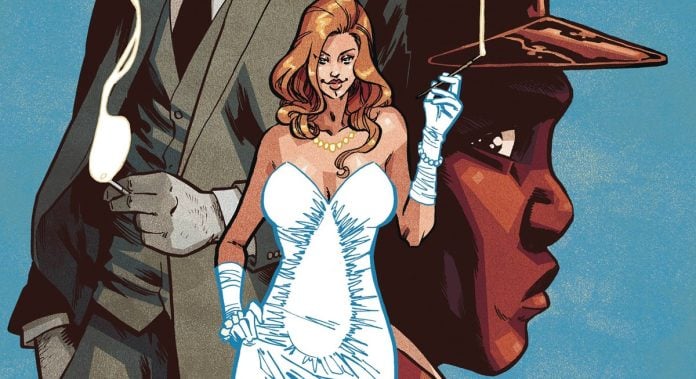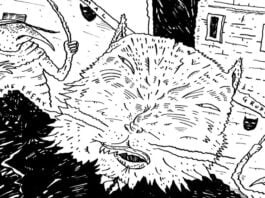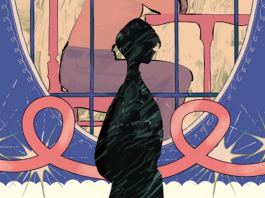 Raymond Chandler’s Trouble Is My Business
Raymond Chandler’s Trouble Is My Business
Writer: Arvind Ethan David
Artist: Ilias Kyriazis
Colorist: Cris Peter
Letterer: Taylor Esposito
Publisher: Pantheon Books
Publication Date: May 2025
Philip Marlowe, the quintessential hard boiled detective, and the work of Raymond Chandler, the quintessential noir writer, have been adapted many times over but now they’ve been brought to the comics medium with an adaptation of the short story, “Trouble Is My Business.”
Originally published in 1939 for Dime Detective Magazine, “Trouble Is My Business” is one of many short stories that Chandler published prior to creating his more iconic novels but the basis of these novels were the short stories themselves, as he stitched together various plots and characters from his older work to create something more sprawling. For example, using pieces from “Finger Man” (1934), “Killer in the Rain” (1935), “The Curtain” (1936), and “Mandarin’s Jade” (1937), Chandler arrived at his most iconic work, The Big Sleep (1939). Chandler’s early short fiction, while significant, is largely not what we might know him for and represents a still unrefined writer that has room to discover his identity in prose.
All of which is a nicer way of saying that Chandler’s original “Trouble Is My Business,” in my opinion, is not particularly good, feeling still too derivative of the whodunit rather than the simultaneously gritty and glamorous appeal of the hard boiled detective. While Chandler’s prose is as sharp as ever, packed with colorful descriptions of LA and the job Marlowe does, that is really the only remarkable quality of the work, as Marlowe himself takes a backseat throughout a majority of the story, passively being introduced to every player until, Agatha Christie style, the final pages are a spectacular unraveling of the short story’s central mystery. Ironic, given that Chandler was infamously not fond of Christie’s work.
Far away from the biting quality and depth of Chandler’s novels, “Trouble” is largely a forgettable entry in the history of Marlowe’s career. Thus, the graphic novel adaptation has the right frame of mind, opening with a forward that announces the liberties it takes with the source material and asking the reader to not compare but appreciate the inherently additive quality of adaptation.
Trouble is my Business — by Arvind Ethan David, Ilias Kyriazis, Cris Peter, and Taylor Esposito — begins unlike the novel by providing us the backstory of our femme fatale, Harriet Huntress. Additionally, David not only extends several scenes and conversations but gives George, a driver in the employ of another central character, the same treatment as Harriet, adding to his backstory and his function in the larger mystery. All of which is, on the surface, a welcome experiment given that it doesn’t treat the original story as precious.
But the trouble with Trouble is ultimately that it wants to have its cake and eat it too, injecting backstory and new motivations to a mystery that derives its power from its randomness and ambiguity. Harriet, rather than being unlocked as a more rich character becomes decidedly less of a femme fatale, with her own fate tied too close to George. She lacks the cruelty or manipulative quality of her namesake or her archetype and the result is a more generic interpretation rather than one that adds depth.
The same goes for George whose backstory addition is meant to help juxtapose him with Marlowe, but the story ends up losing the edge of cruelty and cynicism that made Hard Boiled detective stories so worthwhile. Everyone has good reasons for what they’re doing but when everyone is the sympathetic protagonist of their own story and there’s no underlying darkness or inexplicable elements, the adaptation ends up re-creating the same problem as the short story. Namely that this is less a Marlowe hard boiled adventure and more so a Christie whodunit with a different coat of paint.
In the moment, these additions also unfortunately give the book the quality of being overwritten, saying so much of Chandler’s prose and a good bit of David’s own dialogue that the mysterious elements fade away, the atmosphere is gone, and we’re simply left with a lot of people talking and saying very little. Simultaneously, the extended dialogue can at times take away from the best part of the story, Ilias Kyriazis and Cris Peter’s art.
Kyriazis is stellar here, giving Marlowe a unique look rather than defaulting to a Humphrey Bogart-eques take, but still managing to give the comic a familiar sense of the LA that would exist in Chandler’s novels. The smoke of cigarettes dance around the page, mixing and clashing with the tails of word balloons, venetian blinds cast light on empty walls. The whole aesthetic of the book feels just right when it’s allowed to linger on these scenes, though these moments are few and far between, as the art struggles with David’s script.
Cris Peter’s color work also takes a unique approach by tailoring each page to whoever’s perspective we’re currently in. Marlowe’s world is washed in a sepia tone, not quite the cold contrast of black and white but rather a warm, nostalgic familiarity. It’s the essence of the crime or hard boiled detective novel, that comforting otherworldliness that we can get lost in, filled with danger and unsavory characters but with a playful sense of camp. Meanwhile, Harriet Huntress lives in a world of full color, representing her clear sense of understanding her circumstances and desires. While she plays a role for gambling shark, Marty Estel, she sees the world exactly for what it is, and therefore so does the reader.
These two styles are used together to give the story a unique aesthetic, one that captures how out of sync Marlowe and Harriet are with each other but also how they fit with the world at large. These color choices are also a key window into how the adaptation differs in the finale. And while Kyriazis and Peter sell it, this direction still feels too neat to me, erasing any sort of nuance to the characters for the sake of clarity, which is the antithesis to noir.
Trouble Is My Business feels like someone walked into the beautifully dark and broody room of Marlowe and ripped open the blinds. While the comic is always gorgeous, with tremendous art and color work, it suffers from a script that flattens what makes Chandler interesting as a writer, injecting clarity to the detriment of mood. Rather than enhancing a weaker piece of source material, this adaptation ultimately doubles down on the same weaknesses.
Trouble Is My Business is available now wherever books and comics are sold
Read more great reviews from The Beat!






“but now they’ve been brought to the comics medium”
Not for the first, or even the third time. Michael Lark’s brilliant THE LITTLE SISTER came out in 1997, and iBooks released MARLOWE: A TRILOGY OF CRIME in 2003. There was also a French adaptation of PLAYBACK in 2004 (English edition 2006).
Comments are closed.